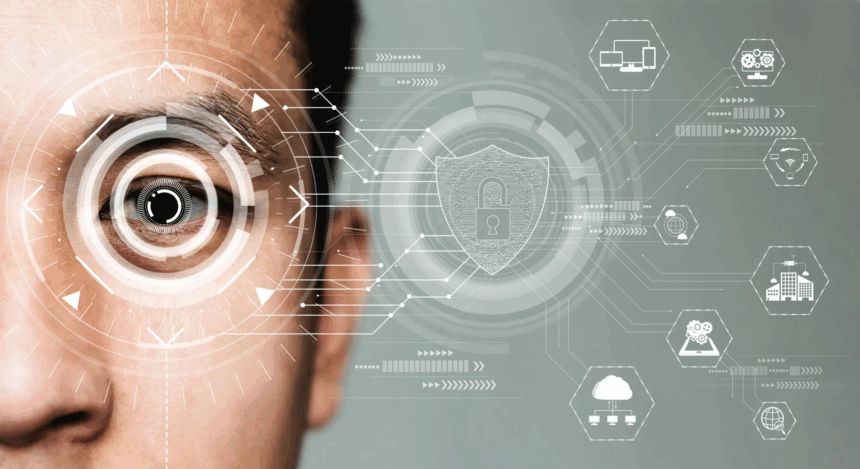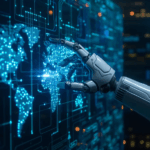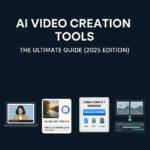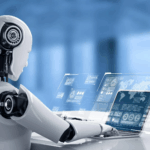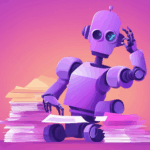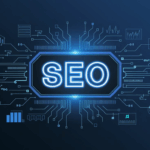In recent years, computer vision applications have gone from research labs to everyday life. By enabling machines to “see” and interpret the world like humans, computer vision has become one of the most impactful branches of artificial intelligence. From scanning medical images to detect diseases, to powering self-driving cars, to improving retail shopping experiences, its potential is reshaping industries at an unprecedented pace.
As we move into 2025, computer vision is no longer limited to futuristic concepts. Businesses in healthcare, automotive, retail, finance, and even agriculture are already reaping the benefits. According to industry reports, the global computer vision market is expected to exceed $40 billion by 2030, driven by demand for automation, safety, and smarter data insights.
This article will explore the top computer vision applications in 2025, providing real-world examples, benefits, and industry use cases. Whether you’re an AI enthusiast, innovator, or business leader, understanding these applications will help you see how computer vision is shaping the future of technology.
What is Computer Vision?
At its core, computer vision is a branch of artificial intelligence (AI) that enables machines to “see” and interpret visual information from the world around them. Just as humans use their eyes and brain to process and understand images, computer vision systems use cameras, sensors, and deep learning algorithms to analyze images and videos.
This field combines multiple disciplines, including machine learning, image processing, pattern recognition, and neural networks, to extract meaningful insights from visual data.
Core Technologies Behind Computer Vision
- Deep Learning & Convolutional Neural Networks (CNNs)
- CNNs mimic the way human vision works by scanning images in layers, detecting shapes, textures, and patterns.
- Image Recognition & Classification
- Identifies objects, faces, or specific features within an image (e.g., detecting a tumor in a scan or a car on the road).
- Object Detection
- Goes beyond classification by locating objects and marking them with bounding boxes in real time.
- Image Segmentation
- Divides an image into different sections (e.g., separating crops from soil in agricultural images).
- Facial Recognition
- Analyzes and compares facial features for security, authentication, and personalization.
Difference Between Human Vision and Computer Vision
- Human Vision: Relies on biological eyes and the brain to process visual input, recognize objects, and infer context.
- Computer Vision: Uses algorithms and vast datasets to process millions of pixels per second, often achieving greater speed, scale, and accuracy than humans, though it still lacks intuition and emotional perception.
In simple terms:
Computer vision is about teaching machines to understand visual data the way humans do — but with the speed and scale of AI.
Key Benefits of Computer Vision Applications
The rise of computer vision applications is not just about advanced technology — it’s about solving real-world problems faster, more efficiently, and more cost-effectively than ever before. Businesses across industries are turning to computer vision because of the clear benefits it provides.
Automation of Repetitive Tasks
Computer vision allows machines to handle repetitive, time-consuming tasks that once required human effort.
- In manufacturing, AI-powered systems automatically detect product defects on assembly lines.
- In retail, automated checkout systems can scan and process items without manual cashier input.
👉 This frees employees to focus on higher-value work while reducing errors.
Improved Accuracy and Efficiency
Unlike humans, who may tire or get distracted, AI models can analyze thousands of images with high consistency.
- In healthcare, computer vision achieves near-human or even superhuman accuracy in detecting diseases from scans.
- In security, facial recognition algorithms identify individuals with precision even in large crowds.
👉 The result is faster decision-making and fewer mistakes.
Real-Time Insights for Smarter Decisions
One of the most powerful benefits of computer vision is its ability to deliver real-time data analysis.
- Autonomous vehicles rely on instant image recognition to avoid accidents.
- Smart cities use real-time traffic monitoring to optimize flow and reduce congestion.
👉 Businesses gain an edge by responding to situations as they happen, not after the fact.
Cost Reduction and Scalability
Implementing computer vision often leads to significant cost savings.
- Agriculture: Early detection of plant diseases prevents large-scale crop losses.
- Retail: Automated inventory management reduces waste and improves supply chains.
👉 Once deployed, these systems scale easily, making them ideal for both startups and enterprises.
Unlocking New Business Models
Beyond efficiency, computer vision is creating entirely new ways to engage customers and deliver value.
- E-commerce: Visual search lets customers upload a photo and instantly find similar products.
- Sports: AI-powered motion tracking enables new forms of fan engagement and performance analysis.
👉 By embracing computer vision, businesses can innovate and differentiate in competitive markets.
1. Healthcare & Medical Imaging
Healthcare has been one of the earliest adopters of computer vision applications, and in 2025, it continues to transform diagnostics, treatment, and patient care. By analyzing medical images with deep learning algorithms, computer vision can detect anomalies faster and sometimes more accurately than human doctors.
Disease Detection & Diagnosis
- Cancer Detection: Computer vision models trained on thousands of mammograms, X-rays, and CT scans are now able to detect early-stage cancers with remarkable accuracy.
- Ophthalmology: AI-powered eye scans can diagnose conditions such as diabetic retinopathy and glaucoma, often in under a minute.
- Cardiology: Automated analysis of echocardiograms helps identify heart defects and measure cardiac function.
👉 By reducing diagnostic errors, computer vision saves lives and enables early treatment interventions.
Surgical Assistance
- Robotic Surgery: Computer vision guides robotic arms in performing minimally invasive surgeries with precision.
- Real-Time Imaging: Surgeons use AI-assisted imaging to highlight critical areas during operations.
- Post-Operative Monitoring: Vision systems track healing progress and detect complications faster than traditional methods.
👉 This improves patient outcomes and reduces surgical risks.
Patient Monitoring & Care
- Hospital Monitoring: Cameras powered by AI detect patient movements, falls, or distress in real time.
- Remote Care: Wearable devices equipped with computer vision track patient vitals and alert doctors instantly.
- Telemedicine: AI enhances remote diagnostics by analyzing video consultations and uploaded medical images.
👉 Especially in rural or under-resourced areas, this ensures patients receive timely care.
Benefits of Computer Vision in Healthcare
- Faster and more accurate diagnosis.
- Reduced burden on doctors and radiologists.
- Cost savings for hospitals through automation.
- Better accessibility to healthcare in underserved regions.
In summary:
Computer vision in healthcare is not replacing doctors — it’s augmenting their capabilities, making medicine more precise, accessible, and proactive.
2. Retail & E-Commerce
The retail and e-commerce industries have embraced computer vision applications to enhance customer experiences, streamline operations, and improve efficiency. In 2025, AI-powered vision technologies are helping businesses gain an edge in everything from automated checkouts to personalized shopping recommendations.
Automated Checkout Systems
- Cashierless Stores: Retail giants are using computer vision to track items picked by customers and automatically bill them as they exit.
- Reduced Wait Times: Vision-enabled checkout reduces queues and speeds up transactions, improving customer satisfaction.
- Fraud Prevention: AI cameras detect theft or suspicious activity in real time, enhancing store security.
👉 This creates frictionless shopping experiences and lowers operational costs.
Product Tagging & Visual Search
- Visual Search Engines: Customers can snap a picture of an item and instantly find it (or similar products) on an e-commerce platform.
- AI-Powered Tagging: Computer vision automatically categorizes products by style, color, size, and more — removing the need for manual cataloguing.
- Fashion & Lifestyle Retail: Shoppers can upload outfit images and find matching accessories or alternatives.
👉 Visual commerce is bridging the gap between offline discovery and online purchase.
Customer Behaviour Analysis
- In-Store Analytics: Cameras track customer movement patterns to reveal hot zones in a store.
- Personalised Ads: AI analyzes what shoppers look at, enabling more targeted digital signage.
- Shelf Monitoring: Vision systems check which items are running low and alert staff automatically.
👉 Retailers can optimize store layouts, promotions, and inventory for higher sales.
Benefits in Retail & E-Commerce
- Improved shopping experiences (faster checkouts, personalised searches).
- Increased efficiency in supply chains and product tagging.
- Enhanced loss prevention and fraud detection.
- Smarter insights into customer preferences and behaviour.
In summary:
Computer vision in retail is redefining how we shop, pay, and interact with products. From Amazon-style cashierless stores to personalised search in fashion apps, the technology is making shopping smarter, faster, and more engaging.
3. Automotive & Transportation
The automotive industry is one of the most exciting fields for computer vision applications, especially with the rapid development of self-driving cars and intelligent transport systems. By enabling vehicles and infrastructure to “see” and interpret surroundings in real time, computer vision is making mobility safer, smarter, and more efficient.
Self-Driving Cars & Advanced Driver Assistance Systems (ADAS)
- Object & Pedestrian Detection: Cameras powered by AI identify pedestrians, cyclists, vehicles, and obstacles on the road.
- Lane Detection & Keeping: Computer vision tracks road markings to ensure vehicles stay safely in lanes.
- Traffic Sign Recognition: AI reads and interprets traffic signs to support autonomous navigation.
- Collision Avoidance: Real-time object recognition helps cars brake or steer away to prevent accidents.
👉 Together, these features make autonomous vehicles a reality and improve road safety even in traditional cars.
Traffic Monitoring & Smart Cities
- Real-Time Traffic Flow Analysis: Cameras powered by computer vision monitor congestion and feed data to smart traffic lights.
- Accident Detection: Vision systems detect crashes instantly, allowing faster emergency response.
- Public Transport Optimization: AI helps buses and trains run on time by analyzing crowd and traffic data.
👉 This creates smarter, eco-friendly cities that reduce delays and carbon emissions.
Vehicle Safety & Fleet Management
- Driver Monitoring Systems (DMS): Cameras track driver attention, detecting fatigue or distractions.
- Fleet Safety: Logistics companies use computer vision to monitor trucks, prevent collisions, and optimize fuel usage.
- License Plate Recognition: Used for toll booths, parking automation, and law enforcement.
👉 These applications ensure safer roads and more efficient logistics networks.
Benefits in Automotive & Transportation
- Improved road safety with collision avoidance.
- Faster traffic flow through AI-powered monitoring.
- Enhanced efficiency for logistics and fleets.
- Reduced human error, the leading cause of accidents.
In summary:
From autonomous driving systems to smart traffic management, computer vision is the driving force behind the future of mobility. By combining real-time image recognition with decision-making algorithms, it is making roads safer and transportation systems smarter.
4. Security & Surveillance
Security is one of the most widely adopted fields for computer vision applications. By giving cameras and monitoring systems the ability to detect, recognize, and analyze visual data in real time, organizations and governments can strengthen safety, prevent crime, and respond quickly to threats.
Facial Recognition
- Access Control: Computer vision replaces traditional ID cards or passwords by using facial recognition for secure entry in offices, airports, and events.
- Law Enforcement: Police agencies use AI-powered cameras to identify suspects in crowds.
- Banking & Retail: Used for customer verification and fraud prevention.
👉 Facial recognition improves security but also raises privacy concerns, making it an ongoing ethical debate.
Threat Detection in Public Spaces
- Crowd Monitoring: AI cameras detect unusual activities like abandoned luggage, sudden crowd movements, or fights in public areas.
- Weapon Detection: Computer vision systems flag guns or knives in surveillance footage.
- Smart Alarms: Automated alerts help security personnel respond instantly.
👉 Real-time recognition can prevent incidents before they escalate.
Law Enforcement & Investigations
- License Plate Recognition (LPR): Cameras read and log plates for parking management, tolls, and police investigations.
- Forensic Video Analysis: AI enhances low-quality CCTV footage to identify suspects or objects.
- Predictive Policing: Analyzes patterns of criminal activity to deploy resources proactively.
👉 These tools reduce human workload and increase investigation speed.
Benefits in Security & Surveillance
- Continuous monitoring without fatigue.
- Faster response to threats.
- Enhanced safety in public and private spaces.
- Reduced costs by automating surveillance tasks.
In summary:
Computer vision in security is shifting the industry from reactive monitoring to proactive threat prevention. While it improves safety, businesses and governments must also balance these benefits with ethical use and privacy protections.
5. Manufacturing & Quality Control
Manufacturing has always relied on efficiency, precision, and safety. With the rise of computer vision applications, factories and production units are now smarter than ever. In 2025, AI-driven visual systems are improving assembly lines, reducing waste, and ensuring product quality at levels that were once impossible with human-only monitoring.
Defect Detection on Assembly Lines
- Real-Time Inspection: Computer vision cameras monitor each product in real time, spotting defects such as cracks, misalignments, or missing components.
- Higher Accuracy: Unlike human inspectors, AI systems don’t suffer from fatigue, enabling consistent quality checks 24/7.
- Cost Savings: Early defect detection reduces the expense of recalls and wasted raw materials.
👉 This ensures higher customer satisfaction and brand reliability.
Robotics Vision in Manufacturing
- AI-Powered Robots: Equipped with vision systems, robots can identify, pick, and assemble parts without human guidance.
- Flexible Automation: Unlike traditional machines, vision-guided robots can adapt to new product designs with minimal reprogramming.
- Collaborative Robots (Cobots): These robots work alongside humans, handling repetitive or dangerous tasks safely.
👉 Robotics powered by vision makes manufacturing more agile and scalable.
Workplace Safety Monitoring
- Hazard Detection: Cameras spot spills, equipment malfunctions, or unsafe worker behavior in real time.
- PPE Compliance: AI ensures workers are wearing helmets, gloves, or safety vests before entering hazardous zones.
- Accident Prevention: Early alerts help supervisors prevent accidents before they occur.
👉 This reduces workplace injuries and ensures compliance with safety regulations.
Benefits in Manufacturing & Quality Control
- Consistently high product quality.
- Reduced downtime due to predictive maintenance.
- Lower operational costs through automation.
- Safer work environments for employees.
In summary:
Computer vision in manufacturing is creating smart factories where every product is monitored, every risk is flagged, and every process is optimized. It not only enhances efficiency but also gives businesses a competitive edge in global supply chains.
6. Agriculture & Farming
The agriculture sector has been rapidly adopting computer vision applications to solve age-old problems like crop disease detection, pest control, and yield optimization. In 2025, smart farming is no longer futuristic — it’s already here, powered by drones, sensors, and AI cameras.
Crop Monitoring & Yield Prediction
- Drone Surveillance: Equipped with AI vision, drones fly over fields capturing high-resolution images that track crop health, soil conditions, and growth patterns.
- NDVI Imaging (Normalized Difference Vegetation Index): Computer vision analyzes plant chlorophyll levels to predict productivity.
- Yield Forecasting: By combining satellite imagery and computer vision, farmers get accurate yield predictions before harvest.
👉 This helps in planning resources, pricing strategies, and reducing losses.
Disease & Pest Detection
- Early Detection: AI cameras identify plant diseases or pest infestations long before they are visible to the human eye.
- Targeted Treatment: Instead of spraying pesticides across entire fields, farmers can treat only the affected areas.
- Cost Savings: This reduces chemical use and minimizes crop damage.
👉 The result is healthier crops, higher yields, and more sustainable farming.
Automated Harvesting & Sorting
- Vision-Guided Harvesting Robots: Robots pick ripe fruits and vegetables without damaging them.
- Sorting & Grading: Computer vision systems classify produce by size, color, and quality for packaging.
- Labour Shortage Solution: Automation helps address the growing shortage of agricultural workers.
👉 This ensures consistent quality control and reduces food waste.
Benefits in Agriculture & Farming
- Increased crop yields with fewer resources.
- Reduced chemical use, supporting sustainable farming.
- Faster, automated harvesting and processing.
- Improved food quality and consistency for consumers.
In summary:
Computer vision in agriculture is creating smart farms that are more efficient, sustainable, and productive. By monitoring crops, detecting diseases early, and automating harvesting, it empowers farmers to feed the world more effectively.
7. Sports & Entertainment
The sports and entertainment industries thrive on visual engagement and data-driven insights, making them ideal fields for computer vision applications. By combining AI with real-time video analysis, these sectors are redefining how fans watch, athletes train, and content creators produce media.
Motion Tracking & Athlete Performance
- Real-Time Tracking: Cameras analyze athletes’ body movements frame by frame, helping coaches refine technique.
- Injury Prevention: AI models detect stress or imbalance in movements, reducing risk of injuries.
- Virtual Refereeing: Computer vision assists referees in making faster, more accurate decisions in sports like football, cricket, and tennis.
👉 Athletes benefit from data-backed improvements, and fans enjoy fairer games.
Enhanced Broadcasting & Fan Experience
- Automated Highlights: AI detects key moments in games and instantly generates highlight reels.
- Smart Camera Angles: Vision systems automatically switch to the best camera angle, keeping fans engaged.
- Augmented Reality (AR): Overlays live stats and graphics directly on screens for richer broadcasts.
👉 This creates interactive, personalized experiences for fans worldwide.
Entertainment & Content Creation
- Special Effects in Movies: Computer vision powers realistic CGI, motion capture, and background replacement.
- Music & Concerts: AI-driven visuals sync with live performances to create immersive shows.
- Esports & Gaming: Vision algorithms analyze gameplay for strategy breakdowns, highlights, and even cheating detection.
👉 Entertainment becomes more immersive, scalable, and creative with AI vision.
Benefits in Sports & Entertainment
- Boosts athlete performance with data-driven insights.
- Enhances referee accuracy and game fairness.
- Delivers personalized and engaging fan experiences.
- Reduces production costs in film and broadcasting.
In summary:
From analyzing athlete movements to creating cinematic experiences, computer vision is transforming sports and entertainment into more data-driven, interactive, and immersive experiences.
8. Finance & Banking
Traditionally, finance relied on human auditors, analysts, and manual verification processes. But in 2025, computer vision applications are revolutionising how banks, insurance firms, and fintech platforms handle verification, security, and fraud detection. By combining AI-driven image and video analysis with automation, the industry is becoming faster, safer, and more customer-friendly.
Fraud Detection & Risk Management
- Document Verification: Computer vision scans ID cards, passports, and utility bills during onboarding (KYC) to verify authenticity.
- Cheque Fraud Prevention: AI analyses handwriting, stamps, and formats on cheques to flag forged or altered items.
- ATM & Transaction Monitoring: Cameras with AI detect unusual behaviour at ATMs, such as card skimming attempts.
👉 This significantly reduces financial crime and builds trust with customers.
Customer Onboarding (KYC)
- Face Matching: Computer vision verifies if a customer’s live selfie matches their official documents.
- Liveness Detection: Prevents fraud by ensuring the image is from a real person, not a photo or video.
- Automated Workflows: Speeds up account opening from days to minutes.
👉 Banks improve compliance and user experience simultaneously.
Insurance & Claims Management
- Damage Assessment: AI analyses photos of damaged vehicles or property to estimate claim costs instantly.
- Fraudulent Claims Detection: Flags inconsistencies in images or documentation submitted for claims.
- Faster Settlements: Customers get paid faster, and insurers reduce manual workload.
👉 This boosts customer satisfaction while reducing operating costs.
Benefits in Finance & Banking
- Enhanced security against fraud.
- Faster customer onboarding and KYC compliance.
- Lower claim processing time in insurance.
- Cost savings with reduced manual verification.
In summary:
By automating verification, fraud detection, and risk analysis, computer vision is helping finance and banking become more secure, compliant, and customer-centric.
9. Smart Cities
As urban populations continue to grow, cities are under pressure to become more efficient, safe, and sustainable. This is where computer vision applications play a vital role. By embedding AI-powered cameras and sensors into infrastructure, cities can collect, analyze, and act on data in real time — turning traditional urban areas into smart, connected ecosystems.
Traffic Optimization & Public Transport
- AI Traffic Lights: Computer vision monitors road congestion and adjusts signal timings dynamically.
- Accident Detection: Cameras instantly detect collisions or breakdowns, alerting emergency services.
- Public Transport Monitoring: AI tracks buses and trains, predicting delays and updating commuters in real time.
👉 The result is smoother traffic flow, reduced emissions, and happier commuters.
Infrastructure Monitoring
- Bridge & Building Inspection: Vision-enabled drones analyze cracks, rust, and structural weaknesses.
- Smart Utilities: Cameras track water leaks, power faults, and pipeline issues before they cause damage.
- Predictive Maintenance: Authorities can schedule repairs before problems escalate.
👉 This improves public safety and reduces costly repairs.
Waste Management & Clean Cities
- Automated Waste Sorting: Computer vision systems in recycling plants separate plastic, glass, and paper efficiently.
- Smart Bins: AI-powered cameras detect fill levels and optimize waste collection routes.
- Pollution Monitoring: Vision sensors track smoke, dust, and emissions for cleaner air.
👉 These applications support sustainable urban development.
Safety & Surveillance in Cities
- Crowd Management: Cameras monitor gatherings, ensuring safety during festivals or protests.
- Crime Prevention: AI spots suspicious activity in public areas and alerts authorities.
- Disaster Response: Vision-based drones assess damage after earthquakes or floods.
👉 This makes cities safer, resilient, and more responsive to crises.
Benefits in Smart Cities
- Improved mobility through intelligent transport systems.
- Reduced pollution and waste via automated monitoring.
- Safer infrastructure with predictive maintenance.
- Increased security for residents.
In summary:
Computer vision is turning traditional cities into smart, responsive, and sustainable ecosystems. By integrating AI with traffic, infrastructure, waste, and safety systems, cities are becoming more livable, eco-friendly, and resilient to the challenges of the future.
In summary:
Computer vision is turning traditional cities into smart, responsive, and sustainable ecosystems. By integrating AI with traffic, infrastructure, waste, and safety systems, cities are becoming more livable, eco-friendly, and resilient to the challenges of the future.
Future Trends in Computer Vision (2025–2030)
The next five years will be crucial for the growth of computer vision applications. While industries like healthcare, automotive, and retail have already adopted it, new breakthroughs in AI and computing will expand its capabilities dramatically. Let’s look at the top trends shaping the future of computer vision between 2025 and 2030.
Generative AI + Computer Vision
- AI-Generated Images & Videos: Tools like DALL·E, MidJourney, and Runway show how generative AI is transforming design and video creation.
- Synthetic Training Data: Instead of collecting millions of real images, generative AI will produce synthetic datasets to train vision models faster.
- Content Creation: Advertising, gaming, and entertainment will see massive growth in AI-generated visual content.
👉 Expect a future where AI doesn’t just analyze images — it creates them.
Edge Computing for Real-Time Vision
- Lower Latency: Instead of sending data to the cloud, AI vision models will run directly on devices (cars, drones, IoT cameras).
- 5G/6G Integration: Ultra-fast connectivity will make it possible to process large video streams instantly.
- Use Cases: Self-driving cars, AR glasses, and smart city surveillance will all benefit from edge computing.
👉 The combination of edge + AI vision will power real-time, life-critical decisions.
Multimodal AI Systems
- Beyond Vision Alone: The future belongs to AI systems that combine text, vision, audio, and sensors.
- Examples: GPT-4o and Gemini already analyze images and respond in natural language.
- Applications: Customer support bots that “see” uploaded photos, medical assistants that analyze scans and talk through diagnoses.
👉 By 2030, most computer vision tools will be multimodal by default.
Democratization of Computer Vision
- Low-Code/No-Code Tools: Platforms like Canva Magic Studio or Runway will allow non-developers to use advanced vision tools.
- SaaS Expansion: Every industry SaaS will embed vision features (fraud detection in banking, visual analytics in e-commerce, etc.).
- SME Adoption: Small businesses will finally leverage AI vision without expensive infrastructure.
👉 Computer vision will shift from enterprise-only to mainstream adoption.
Ethical & Privacy Challenges
- Bias Reduction: AI vision must be trained on diverse datasets to avoid discrimination.
- Deepfake Regulation: With generative vision models, governments will regulate deepfakes in politics and media.
- Data Privacy: Stricter laws will govern how facial recognition and surveillance are used.
👉 Ethical AI will become a mandatory standard, not an option.
Consumer Adoption & Everyday Use
- AR Glasses & Wearables: Devices like Apple Vision Pro will make computer vision a daily tool.
- Smart Homes: Vision-enabled security, cooking assistants, and cleaning robots will become mainstream.
- Healthcare at Home: Computer vision in wearables will allow people to self-monitor conditions like diabetes or heart disease.
👉 By 2030, AI vision will quietly power daily consumer tech, often without people realizing it.
Challenges of Computer Vision Applications
While computer vision applications are transforming industries worldwide, they also face significant hurdles. Understanding these challenges is crucial for businesses, developers, and policymakers to adopt the technology responsibly.
Data Privacy Concerns
Computer vision often requires analyzing sensitive visual data such as faces, license plates, or medical images.
- Surveillance Risks: Cameras in public spaces can raise ethical questions around privacy.
- Medical Data Sensitivity: Hospitals must comply with regulations like HIPAA when using AI for imaging.
- Consumer Consent: Apps that analyze personal photos may unintentionally misuse or store private data.
👉 Strong data governance and consent policies are essential to balance innovation with individual rights.
Bias & Fairness in AI Models
AI is only as good as the data it is trained on. If datasets are biased:
- Facial recognition may perform better on some demographics than others.
- Object recognition might miss cultural or environmental differences.
- Security systems may unfairly target specific groups.
👉 Ensuring diverse, representative training data is critical for fairness.
High Computational Costs
Training computer vision models requires enormous computing power:
- Hardware Demand: GPUs and TPUs are expensive and energy-intensive.
- Cloud Costs: Real-time video processing at scale can cost millions annually.
- Environmental Impact: Energy use in data centers raises sustainability concerns.
👉 Small businesses often face barriers to entry due to cost.
Accuracy & Reliability Issues
Although computer vision has advanced, errors still occur:
- False positives (flagging harmless objects as threats).
- False negatives (failing to detect genuine issues).
- Struggles with poor lighting, weather conditions, or unusual scenarios.
👉 Human oversight is still required for critical applications like medicine or security.
Integration Challenges
Deploying computer vision into existing systems is not always seamless:
- Legacy Systems: Older IT infrastructure may not support real-time AI processing.
- Staff Training: Employees must learn how to use and trust AI tools.
- Scalability Issues: Expanding pilots into full production environments can be complex.
👉 Businesses must invest in change management and technical upgrades.
Ethical & Legal Considerations
- Deepfakes: AI-generated fake videos raise misinformation risks.
- Job Displacement: Automation in manufacturing or agriculture may reduce demand for manual labor.
- Regulation Gaps: Laws on AI use in surveillance, healthcare, or finance are still evolving.
👉 Ethical frameworks and AI regulations will determine how responsibly the technology is used.
In summary:
Computer vision’s challenges revolve around privacy, fairness, costs, accuracy, and ethics. Overcoming these hurdles requires collaboration between technologists, regulators, and businesses to ensure the technology benefits society as a whole.
FAQs on Computer Vision Applications
1. What are computer vision applications?
Computer vision applications are real-world uses of AI that enable machines to interpret and act on visual data from images, videos, or live feeds. Examples include self-driving cars, medical imaging, automated checkouts, and facial recognition.
2. What industries use computer vision the most?
The industries leading in computer vision adoption include:
- Healthcare (disease detection, robotic surgery)
- Automotive (self-driving cars, traffic monitoring)
- Retail (automated checkouts, visual search)
- Manufacturing (defect detection, robotics)
- Security (surveillance, threat detection)
- Agriculture (crop monitoring, automated harvesting)
3. How is computer vision used in healthcare?
In healthcare, computer vision is applied to:
- Analyze X-rays, MRIs, and CT scans for early disease detection.
- Assist in robotic surgeries with real-time imaging.
- Monitor patient safety in hospitals through AI cameras.
It helps doctors diagnose faster and with greater accuracy.
4. Can computer vision improve retail shopping?
Yes ✅. In retail, computer vision enables cashierless stores, visual search for products, and real-time shelf monitoring. For e-commerce, it powers product tagging and personalized shopping experiences.
5. What is the role of computer vision in autonomous vehicles?
Computer vision is the eyes of self-driving cars. It identifies road signs, pedestrians, lanes, and obstacles in real time. Combined with AI decision-making, it helps vehicles navigate safely and avoid accidents.
6. What are the challenges of computer vision applications?
The main challenges include:
- Privacy concerns with surveillance and facial recognition.
- Bias in AI datasets, leading to unfair results.
- High costs of training and deploying models.
- Errors in low-light or unusual conditions.
7. Is computer vision expensive to implement?
Yes and no. Enterprise-level applications like autonomous vehicles or smart cities require high investment. However, with cloud AI services and no-code tools, smaller businesses can now adopt computer vision at much lower costs.
8. What is the future of computer vision?
Between 2025 and 2030, computer vision will merge with generative AI, edge computing, and multimodal systems. Expect advances in real-time analytics, AR/VR integration, and everyday consumer use cases like wearables and smart homes.
9. Is computer vision safe for privacy?
It depends on how it’s used. While it enhances safety in healthcare, transport, and security, misuse in surveillance or deepfakes can harm privacy. Regulations and ethical AI frameworks are crucial for safe adoption.
10. What is the difference between AI and computer vision?
- AI: A broad field enabling machines to think, learn, and act like humans.
- Computer Vision: A subset of AI focused on enabling machines to see and interpret visual data.
👉 In short: All computer vision is AI, but not all AI is computer vision.
Conclusion
The rise of computer vision applications has fundamentally reshaped industries, from healthcare and automotive to retail, finance, agriculture, and smart cities. What was once a research-heavy concept is now powering real-world systems that millions of people interact with every day.
The key takeaways are clear:
- Computer vision enables automation, accuracy, and real-time insights across sectors.
- Its use cases range from life-saving medical imaging to frictionless retail experiences.
- Between 2025 and 2030, trends like generative AI, edge computing, and multimodal systems will unlock even greater potential.
- Challenges remain, including privacy, ethics, and cost barriers — but these are being addressed with better data governance, regulations, and improved AI training methods.
For businesses, the message is simple: adopting computer vision applications today is not optional — it’s a competitive advantage. Those who leverage AI vision to enhance efficiency, reduce costs, and create innovative experiences will lead their industries in the coming decade.
👉 At Ai Of The Decade, we believe the future belongs to companies that combine AI innovation with human creativity. Stay tuned as we continue to explore the breakthroughs shaping AI from 2020 to 2030.

